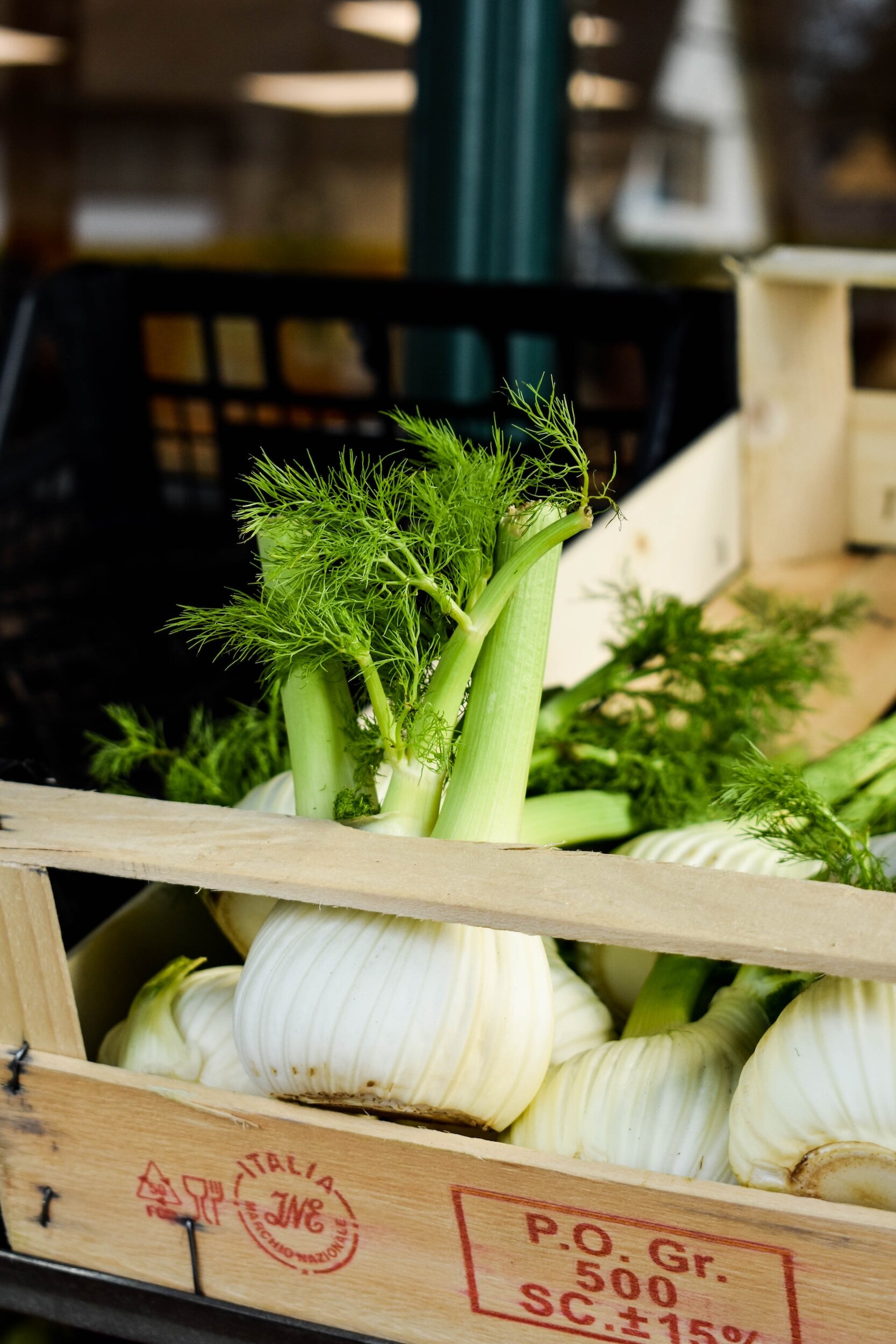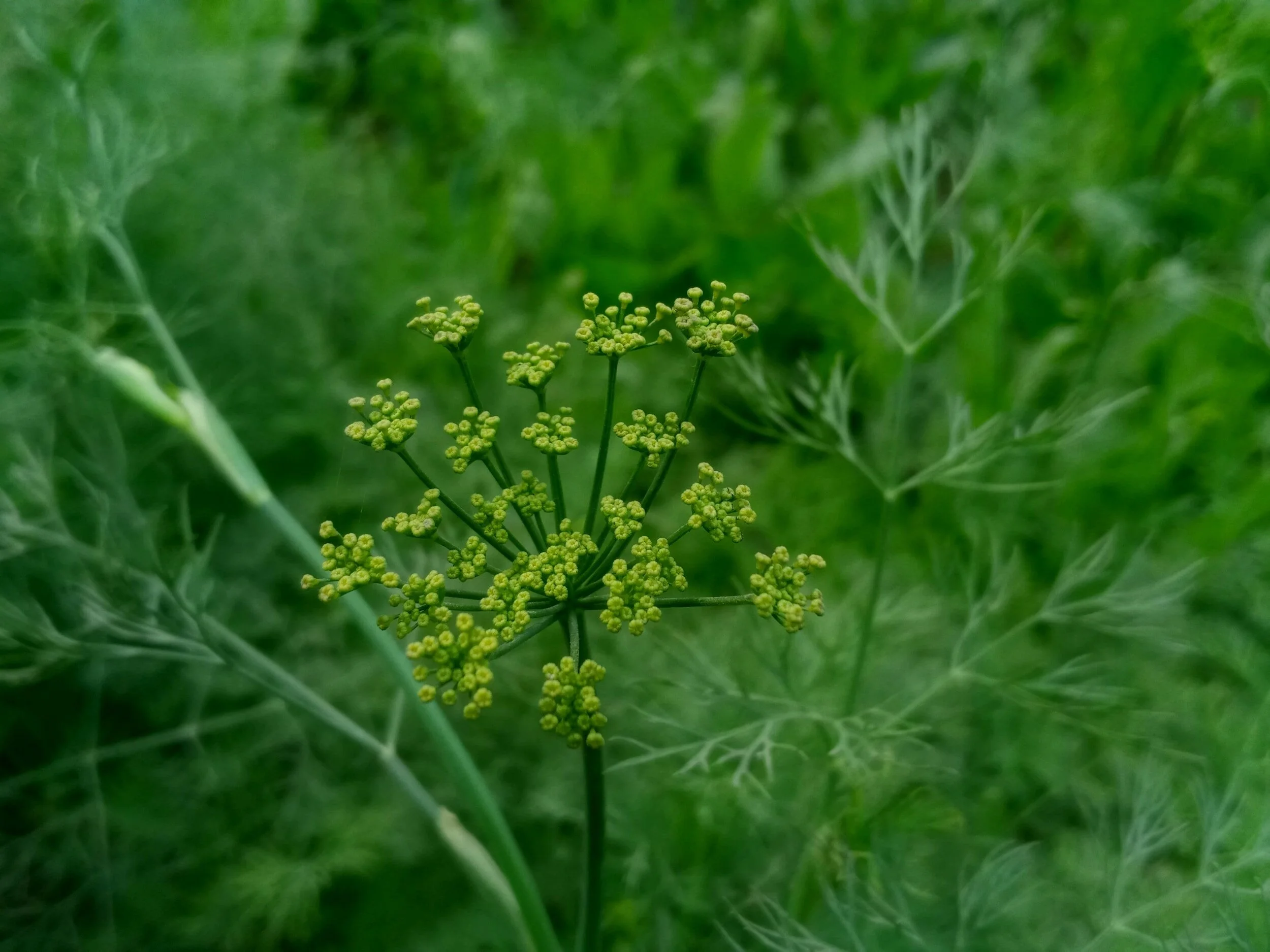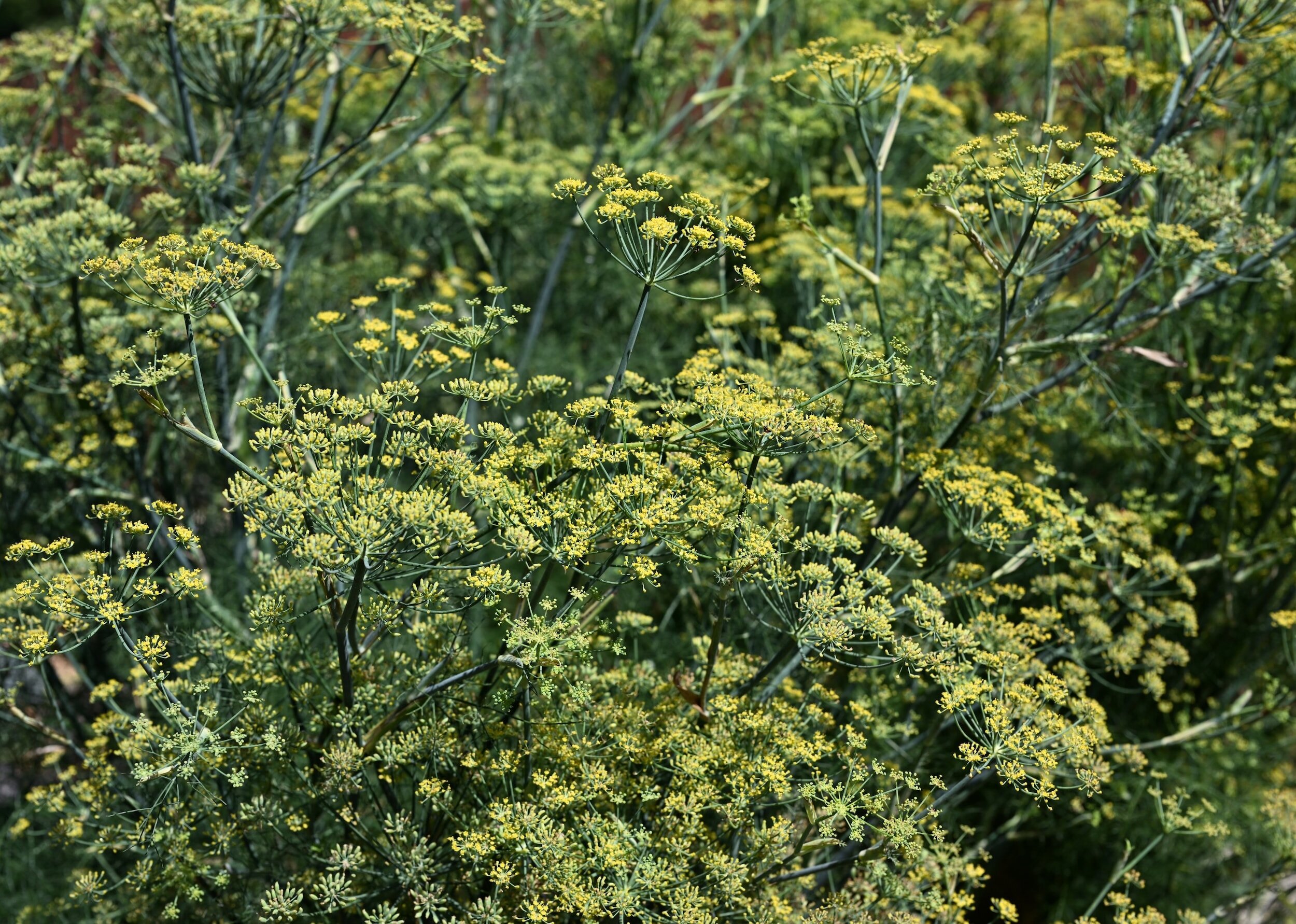A Guide to Companion Planting with Fennel
This article has links to products that I may make commission from.
Diving into the world of companion planting with fennel can be a game-changer for your garden.
It's all about pairing this aromatic herb with the right friends to boost your garden's health and productivity.
In this guide, we're going to explore the best fennel companions and uncover some of the secrets behind successful companion planting.
Whether you're a green thumb or just getting your hands dirty for the first time, understanding how to team up fennel with other plants is a fun and rewarding journey.
So, let's get started and see what makes fennel such a fantastic companion in the garden.
Want to learn more about herb gardening?
Check out my guides:
Understanding Fennel
Fennel, known scientifically as Foeniculum vulgare, is more than just an ordinary garden plant.
It's a multifaceted herb that's deeply rooted in culinary and gardening traditions across the globe.
Let’s dive deeper into its characteristics and uses.
Key Characteristics of Fennel
Appearance:
Fennel is recognizable by its tall, slender stems, bright green feathery foliage, and distinctive yellow flowers.
It typically reaches up to 5 feet in height.
Varieties:
There are two main types of fennel: the bulb type, known for its swollen, bulb-like base, and the herb type, used for its leaves and seeds.
Soil Requirements:
Fennel prefers a well-drained, fertile soil with a neutral to slightly acidic pH.
It's quite adaptable but thrives in rich loams.
Climate:
It is a hardy, perennial plant but can be grown as an annual in colder climates.
Fennel loves sunny, warm conditions like a south facing garden and can tolerate mild frosts.
Culinary Uses
Bulb Fennel:
The bulb is crisp and can be sliced for salads, roasted, or sautéed. It has a sweet, anise-like flavor.
Fennel Seeds:
Used as a spice, they're slightly sweet and are commonly found in Italian sausages, breads, and herbal teas.
Leaves:
The feathery leaves can be used as an herb, similar to dill, adding a delicate flavor to fish, salads, and sauces.
Health Benefits
Fennel is rich in Vitamin C, fiber, potassium, and other minerals, making it beneficial for digestive health.
Its seeds are often used in traditional medicine for their carminative (gas-relieving) properties.
Growing Fennel
Propagation:
It is typically grown from seeds. For best results, sow fennel seeds directly in the garden in early spring.
Germination:
Seeds germinate best at temperatures between 15-21°C (59-70°F).
Care:
Fennel requires regular watering, especially during dry periods.
Mulching can help retain moisture and control weeds.
Harvesting:
Fennel bulbs can be harvested once they reach the size of a tennis ball.
Seeds should be collected when they turn brown.
Fennel and Wildlife
Fennel's flowers are a magnet for beneficial insects, especially pollinators like bees and butterflies.
It's also a host plant for certain butterfly species, such as the Anise Swallowtail.
Environmental Impact
Fennel is known for its low maintenance and minimal need for chemical treatments, making it a sustainable choice for organic gardening.
Key Characteristics:
Growth Habit:
Fennel grows upright with feathery foliage.
Soil Requirements:
Well-drained, fertile soil.
Sun Exposure:
Thrives in full sun.
Propagation:
Mainly grown from seeds.
Learn more about companion planting with my guides:
Companion Planting with Fennel: Enhancing Your Garden Ecosystem
Fennel is a unique player in the realm of companion planting.
While it has some limitations in terms of compatibility with certain plants, it also offers distinct advantages when strategically placed in the garden.
The Benefits of Planting Fennel with Compatible Companions
Attracting Beneficial Insects:
Fennel’s flowers are excellent at attracting beneficial insects like ladybugs, bees, and hoverflies, which help in pollination and controlling pests naturally.
Repelling Pests:
The strong aroma of fennel can deter certain pests, making it a natural pest repellent for some garden plants.
Ideal Companion Plants for Fennel
Anise:
As a relative of fennel, anise shares similar growing conditions and can benefit from the same type of insect visitors.
Here are the seeds I recommend:
Flowering Plants:
Marigolds, nasturtiums, and other flowering plants like geums and Erigeron karvinskianus not only add beauty to the garden but also help in pest control and attracting pollinators.
Here are the seeds I recommend:
Understanding Fennel's Allelopathic Properties
Fennel is known for its allelopathic properties, meaning it releases compounds that can inhibit the growth of nearby plants.
This is why it's crucial to be mindful of what you plant near fennel.
Plants to Avoid Planting Near Fennel
Tomatoes and Nightshades:
Fennel has been observed to have an adverse effect on the growth and health of tomatoes and other nightshade plants.
Beans and Peas:
These legumes do not fare well near fennel due to its allelopathic nature.
Maximizing Fennel's Potential in the Garden
Isolation:
Consider planting fennel in a separate area or in containers to prevent its roots from impacting sensitive plants.
Spacing:
If planted in the ground, ensure there is ample space between fennel and other plants in your garden.
Fennel in a Companion Planting Strategy
Companion Planting in California and Similar Climates:
In regions like California, where the climate is favorable for fennel, use it to attract beneficial insects to your garden, but keep it away from vegetable patches where it might inhibit growth.
Fennel and Flower Combinations:
Planting fennel near flowers can create a visually appealing and ecologically balanced garden space.
Want to learn more about companion planting? Check out my guides:
Companion Plants for Kale: A Guide to Greener Gardens
Companion Planting with Peas: Maximizing Your Garden's Potential
Tips for Planting and Growing Fennel
Fennel, with its distinctive flavor and aroma, can be a rewarding addition to any garden.
However, it requires specific care and conditions to thrive.
Here's a comprehensive guide to planting and growing fennel.
Choosing the Right Variety
Bulb Fennel:
Opt for this variety if you're interested in harvesting the bulb for culinary uses.
Here is the one I recommend:
Herb Fennel: Choose this type for feathery leaves and seeds.
Here is the one I recommend:
Best Time to Plant
Sowing Seeds:
The ideal time to sow fennel seeds is in the early spring, after the last frost, or in late summer for a fall harvest.
Soil Preparation
Soil Type:
Fennel prefers a well-draining, fertile soil rich in organic matter.
pH Levels:
Aim for a soil pH between 5.5 and 6.8. Test your soil and amend it if necessary. Here is the soil pH meter I recommend using.
Planting Fennel Seeds
Sowing Depth:
Sow seeds about 1/4 inch deep.
Spacing:
Space seeds or seedlings about 12 to 18 inches apart. This ensures adequate room for growth and air circulation.
Watering and Feeding
Watering:
Fennel needs consistent moisture.
Water it deeply and regularly, especially during dry spells.
Here is my favorite watering can for the job:
Fertilizing:
Feed fennel with a balanced, all-purpose fertilizer or incorporate compost into the soil at planting time.
Here is the fertilizer I recommend for fennel:
Sunlight and Temperature
Sun Exposure:
Fennel thrives in full sun. It needs at least 6 hours of sunlight daily.
Ideal for a south-facing garden.
Temperature:
Fennel grows best in moderate temperatures.
It can tolerate light frost but may struggle in extreme heat or cold.
Mulching and Weed Control
Mulching:
Apply a layer of organic mulch around the fennel plants to retain moisture, regulate soil temperature, and suppress weeds.
Here is the mulch I recommend for fennel:
Weeding:
Keep the area around fennel plants weed-free.
Weeds can compete for nutrients and water.
Pruning and Maintenance
Pruning:
Trim back any yellowing or dead foliage to encourage healthy growth.
Bolting:
Fennel can bolt (go to seed prematurely) in hot conditions. To prevent this, keep the soil moist and provide some shade if necessary.
Harvesting Fennel
Bulbs:
Harvest fennel bulbs when they are about the size of a small tennis ball. Cut the bulb at the soil line.
Leaves and Seeds:
Harvest leaves as needed. For seeds, wait until they turn brown and harvest them before they fall off.
Pest and Disease Management
Common Pests:
Aphids and slugs can be problematic. Use organic pest control methods like neem oil as needed.
Diseases:
Fennel is relatively disease-resistant, but watch for root rot in overly wet conditions.
Growing Fennel in Containers
Container Size:
Choose a container that is at least 12 inches deep and wide to accommodate the fennel's root system.
Ensure the container has good drainage to prevent waterlogging.
Here is the container I recommend for fennel:
Propagation
By Seed:
Fennel is best grown from seeds. It doesn’t transplant well due to its long taproot.
Learn more about companion planting with my guides:
Where to Plant Fennel in Your Garden
Choosing the right location for planting fennel is crucial for its growth and for the well-being of the surrounding plants.
Fennel has specific needs and interacts with other plants in particular ways, so its placement in your garden can significantly impact its success and the overall garden harmony.
Considering Sunlight and Space
Sunlight Requirements:
Fennel thrives in full sun. It needs a location that receives at least 6 hours of direct sunlight each day.
Avoid planting it in shaded areas.
Room to Grow:
Fennel plants can grow quite tall and bushy.
Ensure there is enough space around the plant for air circulation and growth, without overcrowding other plants.
Soil and Drainage
Well-Drained Soil:
Fennel prefers well-drained soil. Avoid areas where water tends to accumulate or where the soil stays soggy.
Soil Fertility:
Plant fennel in rich, fertile soil. If your garden soil is poor, consider amending it with compost or organic matter.
Check out my guide A Simple Recipe for Rich Compost Tea.
Proximity to Other Plants
Companion Plants:
Place fennel near plants that benefit from its presence, like anise and certain flowering plants that attract beneficial insects.
Distance from Sensitive Plants:
Keep fennel away from plants it might harm, such as tomatoes, beans, and peas.
A good rule of thumb is to plant fennel at least 4 to 5 feet away from these sensitive plants.
Utilizing Garden Layout
Vegetable Garden:
If you have a vegetable garden, find a spot for fennel where it won’t interfere with the growth of sensitive vegetables.
Consider the edges or corners of the garden.
Herb Garden:
Fennel can be a great addition to an herb garden, especially if grouped with other similar Mediterranean herbs that require full sun and well-drained soil.
To learn more about herb gardening, check out my guide How to Start a Raised Bed Herb Garden.
Flower Beds and Borders:
Integrating fennel into flower beds or along borders can be visually appealing.
Its height can add structure, and its flowers attract pollinators.
Container Gardening
Portability:
If you're unsure about the best spot in your garden, or if you want to avoid the risk of fennel spreading too much, consider planting it in a container. This way, you can move it around as needed.
Container Size:
Ensure the container is large enough (at least 12 inches deep) to accommodate the fennel’s root system.
Attracting Wildlife
Pollinator-Friendly Area:
If you aim to attract pollinators, plant fennel near other flowering plants known to attract bees and butterflies.
Avoiding Problematic Areas
Wind Protection:
While fennel is relatively hardy, it can benefit from some protection against strong winds, especially in exposed or elevated garden sites.
Learn more about companion planting with my guides:
Thriving Together: The Best Companion Plants for Swiss Chard
Fennel's Role in Attracting Beneficial Insects
Fennel is not just a culinary delight; it's a powerful ally in promoting biodiversity and ecological balance in your garden.
Its ability to attract a variety of beneficial insects is one of its most valuable traits for organic and sustainable gardening.
Attracting Pollinators
Bees and Butterflies:
Fennel’s yellow umbel flowers are a major attractor for bees and butterflies.
These pollinators are crucial for the health of many other plants in the garden, ensuring successful fruit and seed production.
Creating a Pollinator-Friendly Environment:
Planting fennel alongside other flowering plants can create a vibrant habitat that encourages these beneficial visitors.
Hosting Beneficial Predators
Ladybugs and Lacewings:
These insects are natural predators of common garden pests like aphids and mites.
Fennel acts as a magnet for these beneficial predators, helping to maintain a natural balance and reducing the need for chemical pest control.
Encouraging Biodiversity:
The presence of these beneficial insects contributes to a diverse and balanced garden ecosystem.
Beneficial Insects as Natural Pest Control
Insect Predators:
Ladybugs, for instance, can consume vast quantities of aphids, helping control these pests naturally.
Parasitic Wasps:
Some species of parasitic wasps are attracted to fennel. These wasps lay their eggs inside garden pests like caterpillars, controlling their populations.
Fennel’s Long Blooming Period
Extended Attraction:
Fennel flowers over a long period, which means it provides a consistent source of nectar and pollen for beneficial insects throughout the growing season.
Fennel in Permaculture and Sustainable Gardens
Permaculture Principles:
Fennel aligns well with permaculture practices, which emphasize sustainable and self-sufficient agricultural systems.
Its ability to attract beneficial insects plays a role in natural pest management, a key permaculture strategy.
Eco-Friendly Gardening:
By attracting beneficial insects, fennel reduces the need for harmful pesticides, making it an excellent choice for eco-conscious gardeners.
Grow more with my companion planting guides:
FAQs
Why is fennel considered a bad companion plant for some vegetables?
Fennel has allelopathic properties, meaning it releases certain biochemicals that can inhibit the growth and development of nearby plants.
This effect is particularly noticeable with vegetables like tomatoes, beans, and peas.
These biochemicals can affect seed germination and plant growth, leading to reduced yields.
Therefore, it's advisable to plant fennel away from these sensitive vegetables.
Additionally, fennel's robust root system might compete for nutrients and water, which can further impact the growth of neighboring plants.
Can fennel be grown in pots?
Yes, fennel can be successfully grown in pots, and this can actually be an ideal way to manage its growth.
When grown in containers, fennel's spread is controlled, and its allelopathic effects on other plants are minimized.
For best results, choose a pot that is at least 12 inches deep and wide to accommodate the plant's taproot and ensure it has adequate drainage.
Regular watering and fertilization are important, as container plants can dry out more quickly and may require more frequent feeding than those in the ground.
This is a great way to use rainwater collected from a water butt. Read more about this in my guide Water Butts: Sustainable Water Storage for Your Garden.
What are some tips for growing fennel from seeds?
Growing fennel from seeds can be rewarding and is relatively straightforward.
Start by choosing a sunny location with well-drained soil.
Sow the seeds directly in the garden in the early spring or late summer.
Plant the seeds about 1/4 inch deep and space them about 12 to 18 inches apart.
Fennel seeds need consistent moisture to germinate, so keep the soil evenly moist.
Once the seedlings are a few inches tall, thin them to prevent overcrowding.
Fennel does not transplant well due to its deep taproot, so it's best to sow the seeds where you want the plants to grow.
How far should fennel be planted from other plants?
As a general guideline, fennel should be planted at least 18 to 24 inches away from other plants.
This spacing is important to reduce the risk of allelopathic effects on sensitive plants and to ensure that fennel's robust root system does not interfere with the growth of neighboring plants.
Additionally, this spacing allows for adequate air circulation around the plants, which can help prevent disease.
If planting near sensitive vegetables like tomatoes or beans, increase this distance or consider using a barrier like a physical divider or container planting to further minimize interaction.











































